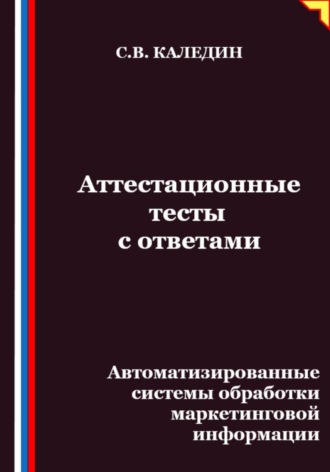ГОСТ Р ИСО 23500-2-2021. Национальный стандарт Российской Федерации. Подготовка жидкостей для гемодиализа и сопутствующей терапии и менеджмент качества. Часть 2. Оборудование для подготовки воды для гемодиализа и сопутствующей терапии
БИБЛИОГРАФИЯ
[1] | ISO 14971:2007, Medical devices - Application of risk management to medical devices |
[2] | ASTM International F0838-05. Standard test method for determining bacterial retention of membrane filters utilized for liquid filtration, Book of Standards, volume 14.02, 2013 |
[3] | JIS K 3823:2012, Testing methods for determining bacterial rejection of ultrafiltration modules |
[4] | JIS K 3824:2012, Testing methods for endotoxin rejection of ultrafiltration modules |
[5] | World Health Organization. Guidelines for drinking-water quality, Fourth edition [electronic resource]: 2011, Geneva. Available online at http://www.who.int/water_sanitation_health/publications/2011/dwq_guidelines/en/ |
[6] | Maltais J.B., Meyer K.B., Foster M.C. Comparison of techniques for culture of dialysis water and fluid. Hemodial Int. 2017, 21, pp. 197 - 205 |
[7] | REASONER D.J., & GELDREICH E.E. A new medium for the enumeration and subculture of bacteria from potable water. Appl. Environ. Microbiol. 1985, 49 (1), pp. 1 - 7 |
[8] | VAN DER LINDE K., LIM B.T., RONDEEL J.M.M., ANTONISSEN L., DE JONG G.M.T. Improved bacteriological surveillance of haemodialysis fluids: a comparison between Tryptic soy agar and Reasoner's 2A media. Nephrol. Dial. Transplant. 1999, 14, pp. 2433 - 2437 |
[9] | United States Pharmacopeia. 1231> Water for Pharmaceutical Purposes. (Rockville, MD, March 8, 2017) |
[10] | Rice E.W., Baird A.B., Eaton A.D. Standard Methods for the Examination of Water and Wastewater. 23rd Edition, American Public Health Association, American Water Works Association, Water Environment Federation. 2017 |
[11] | U.S. Environmental Protection Agency. Methods for the Determination of Metals in Environmental Samples, Supplement 1 (EPA-600-R-94-111). Environmental Monitoring Systems Laboratory, Cincinnati, Ohio, 1994 |
[12] | GHOSH R., SIDDARTH M., SINGH N., TYAGI V., KARE P.K., BANERJEE B.D., KALRA O.P., TRIPATHI A.K. Organochlorine pesticide level in patients with chronic kidney disease of unknown etiology and its association with renal function. Environ Health Prev Med 2017, 22(1), pp. 49 |
[13] | SHANE A., SNYDER S.A., REDDING A.M., CANNON F.S., dECAROLIS J., OPPENHEIMER J., WERT E., C, YOON Y. Role of membranes and activated carbon in the removal of endocrine disruptors and pharmaceuticals. Desalination 2007, 202 (1-3), pp. 156 - 181 |
[14] | Munir Cheryan Ultrafiltration and microfiltration handbook, 1998 CRC Press |
[15] | ZAID K., CHOWDHURY R., SUMMERS S., WESTERHOFF G.P., LETO B.J., KIRK O Nowack K.O., Corwin C.J., Passantino L.B., Activated Carbon: Solutions for Improving Water Quality American Water Works Association 2013 |
[16] | AMES R.G., & STRATTON J.W. Effect of chlorine dioxide water disinfection on haematologic and serum parameters of renal dialysis patients. Arch. Environ. Health. 1987, 42 (5), pp. 280 - 285 |
[17] | DAVIDOVITS M., BARAK A., CLEPER R., KRAUSE I., GAMZO Z., EISENSTEIN B. Methaemoglobinaemia and haemolysis associated with hydrogen peroxide in a paediatric haemodialysis centre: a warning note. Nephrol Dial Transplant. 2003, 18(11), pp. 2354 - 8 |
[18] | KESHAVIAH P., LUEHMANN D., SHAPIRO F. Comty C. Investigation of the Risks and Hazards Associated with Haemodialysis Systems. (Technical report, Contract #223-78-5046) Silver Spring, MD: U.S. Dept. of Health and Human Services, Public Health Service/Food and Drug Administration/Bureau of Medical Devices, June 1998 |
[19] | KLEIN E. Effects of disinfectants in renal dialysis patients. Environ Health Perspect. 1986, 69, pp. 45 - 7 |
[20] | NICKEY W.A., CHINITZ V.L., KIM K.E., ONESTI G, SWARTZ C. Hypernatremia from water softener and malfunction during home dialysis. JAMA. 1970, 214(5), pp. 915 - 916 |
[21] | CATERSON R.J., SAVDIE E., RAIK E., COUTTS D, MAHONY JF. Heinz-body haemolysis in haemodialysed patients caused by chloramines in Sydney tap water. Med. J. Aust. 1982, 2 (8), pp. 367 - 368 |
[22] | TIPPLE M.A., SHUSTERMAN N., BLAND L.A., MCCARTHY M.A., FAVERO M.S., ARDUINO M.J., REID M.H., JARVIS W.R. Illness in haemodialysis patients after exposure to chloramines in contaminated dialysate. ASAIO Trans. 1991, 37 (4), pp. 588 - 591 |
[23] | WARD D.M. Chloramine removal from water used in haemodialysis. Adv. Ren. Replace. Ther. 1996, 3 (4), pp. 337 - 3,47 |
[24] | PETERSEN M.D., & THOMAS S.B. The new EPA lead and copper rule, Contemp. Dial. Nephrol. 1991, Sept., pp. 26 - 29 |
[25] | LUEHMANN D.A., KESHAVIAH P.R., WARD R.A., KLEIN E. A Manual on Water Treatment for Haemodialysis. (HHS Publication FDA 89-4234) Rockville, MD: U.S. Dept. of Health and Human Services, Public Health Service/Food and Drug Administration/Center for Devices and Radiological Health, July 1989 |
[26] | BLAND L.A., ARNOW P.M., ARDUINO M.J., BOVA J., MCALLISTER S.K. Potential hazards of deionization systems used for water purification in haemodialysis. Artif. Organs. 1996, 20 (1), pp. 2 - 7 |
[27] | JOHNSON W.J., & TAVES D.R. Exposure to excessive fluoride during haemodialysis. Kidney Int. 1974, 5 (6), pp. 451 - 454 |
[28] | ARNOW P.M., BLAND L.A., GARCIA-HOUCHINS S., FRIDKIN S., FELLNER S.K. An outbreak of fatal fluoride intoxication in a long-term haemodialysis unit. Ann. Intern. Med. 1994, 121(5), pp. 339 - 344 |
[29] | SIMENHOFF M.L., DUNN S., FIDDLER W., PENSABENE J.W., SMILEY J. Generation of dimethylnitrosamine in water purification systems. Detection in human blood samples during haemodialysis. JAMA. 1983, 250 (15), pp. 2020 - 2024 |
[30] | CHAPMAN K.G., ALEGNANI W.C., HEINZE G.E. Flemming, C.V., Kochling, J., Croll, D.B., Kladko, M., Lehman, W.J., Smith, D.C., Adair, F.W., Amos, R.L., Enzinger, R.M., Grant, D.E., Soli, T.C. Protection of water treatment systems, part IIa: Potential solutions. Pharm. Technol. 1983, 7 (9), pp. 86 - 91 |
[31] | LIBMAN V. Use of Reynolds number as a criterion for design of high-purity water systems. Ultrapure Water. 2006, 23, pp. 26 - 34 |
[32] | MARTINY H., BRUST H., RUEDEN H. The use of UV radiation for the disinfection of water. IV. Microbiological studies of the UV sensitivity of different aged cells of E. faecium, E. coli and P. aeruginosa. Zbl. Hyg. Umweltmed. 1990, 190 (1-2), pp. 39 - 50 |
[33] | CARSON L.A., & PETERSEN N.J. Photoreactivation of Pseudomonas cepacia after ultraviolet exposure: A potential source of contamination in ultraviolet-treated waters. J. Clin. Microbiol. 1975, 1(5), pp. 462 - 464 |
[34] | BECKER S., JORDAN R.L., ORLANDO G.S., KOREN H.S. In vitro ozone exposure inhibits mitogen-induced lymphocyte proliferation and IL-2 production. J. Toxicol. Environ. Health. 1989, 26 (4), pp. 469 - 483 |
[35] |
|
[36] | BOTELLA J., TRAVER J.A., SANZ-GUAJARDO D., TORRES M.T., SANJUAN I., ZABALA P. Chloramines, an aggravating factor in the anemia of patients on regular dialysis treatment. Proc Eur Dial Transplant Assoc. 1977, 14, pp. 192 - 9 |
[37] | FENVES A.Z., GIPSON J.S., PANCORVO C. Chloramine-induced methemoglobinemia in a hemodialysis patient. Semin Dial. 2000, 13 (5), pp. 327 - 9 |
[38] | FLUCK S., MCKANE W., CAIRNS T., FAIRCHILD V., LAWRENCE A., LEE J, MURRAY D., POLPITIYE M., PALMER A., TAUBE D. Chloramine-induced haemolysis presenting as erythropoietin resistance. Nephrol Dial Transplant. 1999, 14 (7), pp. 1687 - 91 |
[39] | ISO 7890-3:1988, Water quality - Determination of nitrate - Part 3: Spectrometric method using sulfosalicylic acid |
[40] | ISO 10304-1:2007, Water quality - Determination of dissolved anions by liquid chromatography of ions - Part 1: Determination of bromide, chloride, fluoride, nitrate, nitrite, phosphate and sulfate |
[41] | ISO 10359-1:1992, Water quality - Determination of fluoride - Part 1: Electrochemical probe method for potable and lightly polluted water |
[42] | ISO 17294-2:2016, Water quality - Application of inductively coupled plasma mass spectrometry (ICP-MS) - Part 2: Determination of selected elements including uranium isotopes |
[43] | EPA 200.9:1994, Determination of Trace Elements by Stabilized Temperature Graphic Furnace Atomic Absorption |
[44] | EPA 300.7:1986, Quality Criteria for Water |
[45] | ISO 23500-4:2019, Preparation and quality management of fluids for haemodialysis and related therapies - Part 4: Concentrates for haemodialysis and related therapies |
[46] | ISO 23500-5:2019, Preparation and quality management of fluids for haemodialysis and related therapies - Part 5: Quality of dialysis fluid for haemodialysis and related therapies |
[47] | American Public Health Association. Standard Methods for the Examination of Water and Wastewater. APHA, Washington, D.C., 22 ed., 2012 |
УДК 628.1.038:616.61 - 78:006.354 | ОКС 11.040.60 |
Ключевые слова: гемодиализ, оборудование для водоподготовки, концентрат, вода для гемодиализа, диализирующий раствор, требования, испытания | |

 Подписаться на обновления
Подписаться на обновления